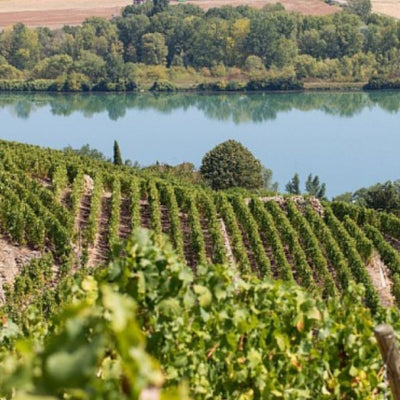
Terroir and the choice of grape varieties
In the fourth part of our series on terroir, Westgarth Wines specialist Maurizio Broggi explains how choosing the right grape varieties can reflect the terroir of the vineyard.
As explored in previous articles, terroir encompasses the unique synergy between soil, topography, and climate. Together, these elements create the conditions that define the character of a wine.
Among these, climate – regional temperature, sunlight, and rainfall patterns – is essential in setting the vineyard’s mesoclimate and the vine's canopy microclimate. In the world’s top vineyards, terroir often enables an extended growing season, promoting slow ripening, a process linked to some of the finest expressions of flavor and complexity in wine.
The influence of climate on ripening is central, but the selection of grape variety is equally important in creating wines that reflect terroir.
Different grape varieties have distinct ripening needs, sensitivities, and timing, with some ripening early and others late. A successful match between grape variety and terroir allows for balanced ripening, producing grapes that fully express their potential in terms of sugars, acids, phenolics, and aromatics.
The role of climate in grapevine development
Climate affects grape growth throughout the season, influencing how and when a variety ripens. Varieties best suited to warm climates generally have longer growing seasons that allow for slow accumulation of sugars and phenolic compounds, providing body, structure, and layers of flavor in the final wine.
Cooler climates, meanwhile, contribute to higher acidity levels and more restrained sugar development, often resulting in wines with vibrant acidity, refined tannins, and distinctive freshness.
Some of the most exceptional terroirs worldwide are associated with longer ripening periods, allowing grapes to develop complexity over time.
For example, in the northern regions of France, cool climate areas like Burgundy and Champagne benefit from prolonged seasons, where grapes like Pinot Noir and Chardonnay reach full ripeness at a slower pace. This extended timeline enables the grapes to achieve a delicate balance between acidity, sweetness, and subtle flavor compounds, giving these wines their characteristic elegance and complexity.
Matching grape varieties to terroir
Selecting the right grape variety for a specific terroir is essential to creating high-quality wine. Grape varieties are often chosen based on their ability to ripen fully under local climatic conditions. This precise matching is seen in renowned regions like the Northern Rhône Valley, where Syrah achieves its peak expression. Here, Syrah ripens slowly, developing deep flavors, structure, and aromatic complexity that make wines from this area globally prized.
Similarly, Bordeaux’s famous terroirs are ideal for varieties such as Cabernet Sauvignon and Merlot, which thrive in the region's temperate climate. Cabernet Sauvignon benefits from Bordeaux’s moderate heat and abundant sunshine, ripening slowly and accumulating tannins and anthocyanins that contribute to the wine’s depth and aging potential. Merlot, an earlier-ripening variety, balances the blend, bringing a softness and roundness that complements the more robust Cabernet.
In cooler climates like Germany’s Mosel, Riesling is the variety of choice. This late-ripening grape develops concentrated acidity and aromatic complexity when grown in cool conditions with ample sunshine and moderate rainfall. The Mosel’s steep, slate-laden slopes amplify these climatic benefits, allowing Riesling to ripen fully while preserving its hallmark crispness and minerality.
Terroir’s role in flavor and style expression
The choice of grape variety also plays a role in showcasing terroir-specific flavors and styles. Each variety interacts differently with soil composition, water availability, and temperature shifts, which can significantly impact the wine’s final profile.
For example, Chardonnay grown in the limestone-rich soils of Burgundy’s Côte de Beaune expresses a mineral-driven character with finesse and depth, while the same variety cultivated in warmer, sandy soils of California may yield richer, riper flavors and a different stylistic profile.
By choosing varieties that align with the terroir, winemakers can harness the natural characteristics of their vineyard, creating wines that express the unique personality of the land.
Stay tuned for Part V of our series, which looks at criticism of the concept of terroir.
Want to read more? Take a look at some of our other blogs:
Also in News



